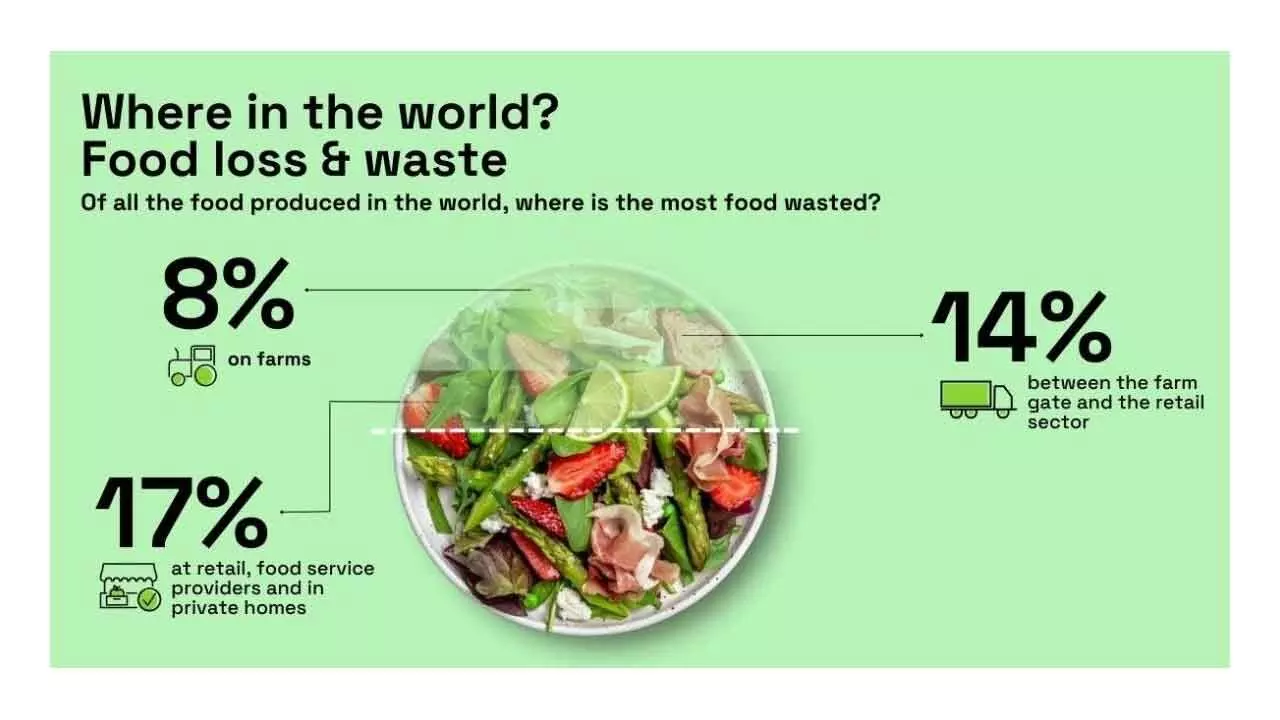Lead By Example: Save Environmental Costs By Cutting Down Household Food Waste
Reducing this waste even by 25% can feed 821 million chronically undernourished persons
Lead By Example: Save Environmental Costs By Cutting Down Household Food Waste

The responsibility for food loss and waste should not only fall on individual consumers. While individuals can make a difference, larger policy changes — in how food is grown, processed and distributed — are also needed
Globally, household food waste alone accounts for about $700 billion in environmental costs owing to the resources expenaded in producing discarded or uneaten food, along with social costs reaching approximately $900 billion. Reducing this waste even by 25 per cent could potentially feed 821 million chronically undernourished individuals.
Household food loss is a global problem of staggering proportions.
In the UK, about 60 per cent of all food waste comes from homes, and in the US, 40-50 per cent does. The statistics are similar in Japan. In 2021, around 47 per cent of the country's 5.2 million tonnes of edible food waste originated from private kitchens.
The reasons for all this at-home waste vary, but there are some common culprits across cultures and geographies.
These include food getting "lost" inside people's fridges; consumers misinterpreting the meaning of food date labels; impulse buying and poor planning during supermarket visits; and a general lack of awareness about the need to reduce food loss.
Virtually all countries are aware of these problems and many are trying to address them. But Japan faces even greater pressure to find solutions because it imports nearly two-thirds of its food. This amplifies the economic and environmental costs of throwing edible products away.
"Japan is a country that is not at all self-sufficient in its food supply. It is not a good idea to import more food than we need and then throw a lot of it away," says Tomoko Okayama, a waste management researcher at Taisho University in Tokyo.
While refrigerators do have significant carbon footprints, optimal use can minimise both their environmental impact and food waste.
Contrary to popular belief, nutrient losses in refrigerated leftovers and fresh produce are generally negligible. Given that items at the back of an overly large fridge are often forgotten and then wasted, reorganising a fridge can help minimise food waste. By taking a few minutes to educate ourselves in correctly refrigerating various foods, we can take major strides towards reducing food waste in our homes.
With manufacturers steadily reducing the carbon impact of refrigerators, and Indian consumers becoming more conscious about energy efficiency in their household appliances, it’s time for us to outgrow our aversion to refrigerated foods.
Meal planning can be a hassle in a contemporary India defined by dual-earner families and a continual time crunch. There are many guidelines and apps available to help plan meals across the week, with customisable grocery lists based on dietary preferences and household size. Taking a bit of time during the weekend to plan the upcoming week’s grocery shopping, and to cook meals in large batches, can help minimise food wastes and simplify our weekday routines.
Supermarkets are infamous for organising their shelves (especially those near the checkout counters) to dazzle and confuse shoppers into impulse buying and excessive buying. Creating and sticking to a grocery list, and navigating quickly through the aisles, are two simple ways to avoid buying foods that we don’t really need, which may end up as waste.
To achieve significant reductions in food waste, we need to change our mindset: visions of excess food should make us feel ashamed. In our bid to become a true world power, we must do our bit to make our food economy waste-free, equitable, and sustainable.
In Japan and a number of other countries, "best-by" refers to the date before which a product is at its peak deliciousness, while "use-by" indicates the date that the manufacturer guarantees for safe consumption. Consumers around the world tend to conflate these dates, though.
Even if a food has exceeded its use-by date, many experts point out that manufacturers are conservative in their estimates. Rather than just throwing things out solely based on their "best-before" or "best-by" label, he suggests that people use their senses – literally – for certain low-risk items like condiments, produce, baked goods and fermented foods like yogurt and cheese.
"Smell it, look at it," he says. "Most things are good for quite a long period after the expiry."
Finding simple ways to reduce household food waste is crucial. That said, responsibility for food loss and waste should not only fall on individual consumers. While individuals can make a difference, larger policy changes — in how food is grown, processed and distributed — are also needed.
Eating healthier and helping improve our planet’s health, here are some steps you can take: Plan your meals before shopping; learn to love leftovers and store food properly for minimum spoilage and advocate for change by setting an example.

